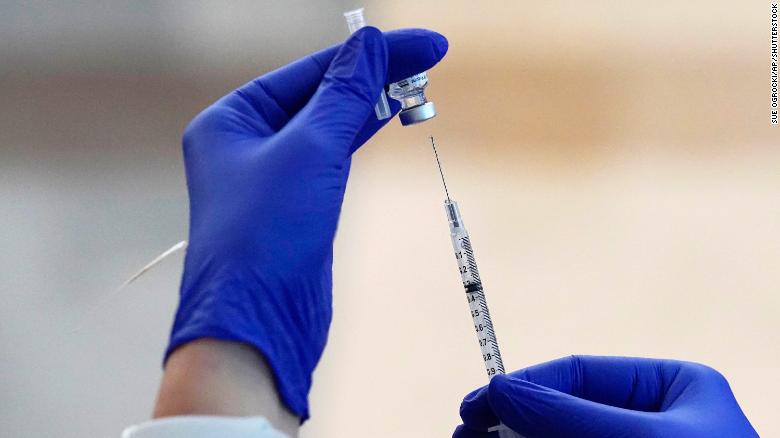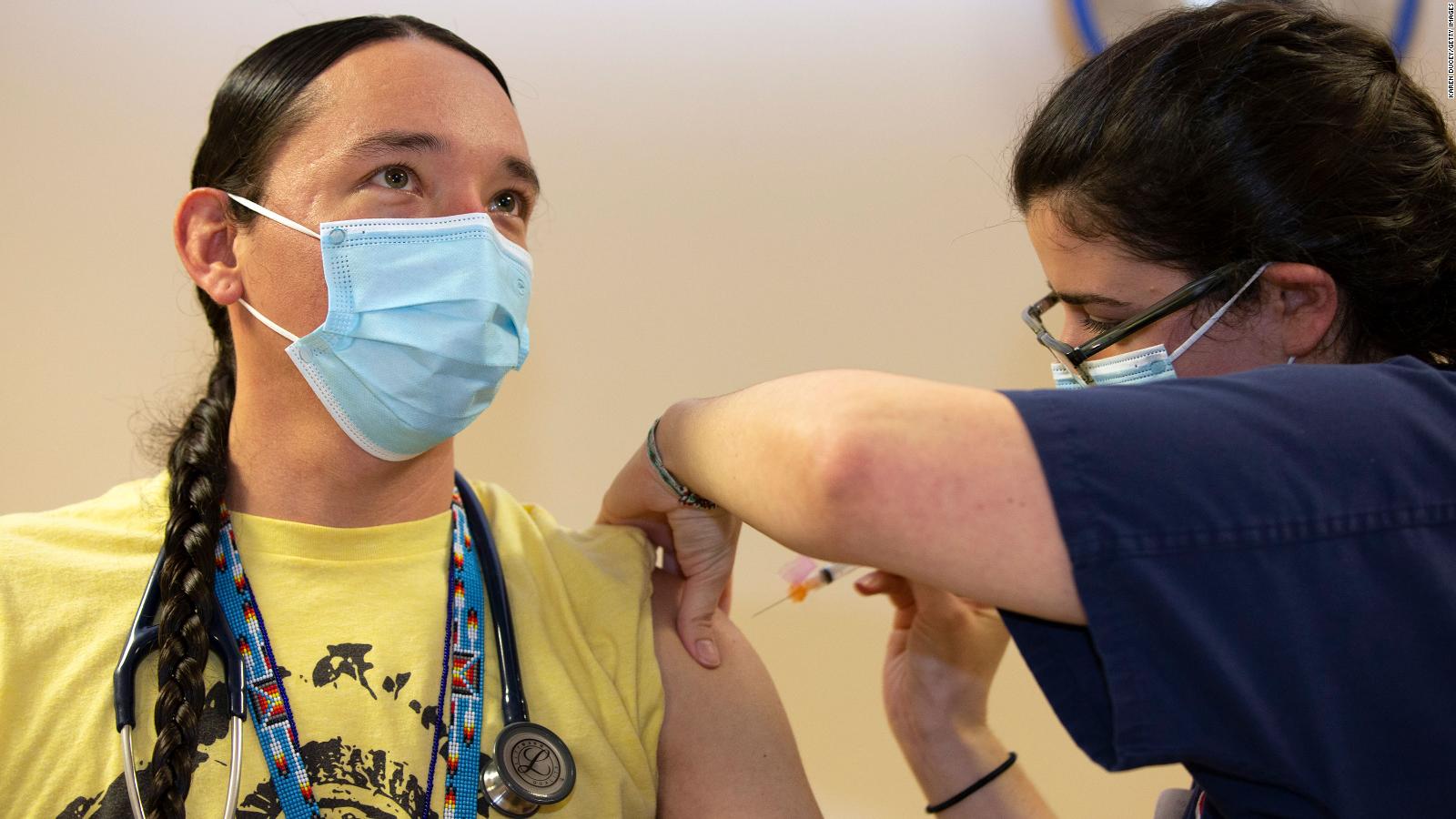Any resident of Oklahoma can now get the Covid-19 vaccine — but it’s not because of the state’s health department. Instead, Oklahomans have several Native tribes to thank.
Last week, the Chickasaw Nation opened up Covid-19 vaccine appointments to all Oklahoma residents, regardless of whether they are citizens of the tribe.
Other tribes headquartered in Oklahoma have expanded vaccinations beyond tribal citizens, too. The Osage, Choctaw and Citizen Potawatomi Nations are offering vaccines to all members of the public, while the Cherokee Nation has opened appointments to anyone residing within its 14-county jurisdiction.
The state of Oklahoma, meanwhile, is currently on Phase 3 of its vaccine distribution plan.
That criteria covers a wide swath of people, including healthcare workers, first responders, residents 65 and older, those with medical conditions, teachers and school staff, students 16 and older, people in congregate settings, public health staff, government officials and essential workers. Still, all residents won’t be eligible under the state’s plan until Phase 4.
Tribes want to reach herd immunity
Tribal nations in Oklahoma received allotments of the vaccine from the Indian Health Service. As those tribes demonstrated that they were able to get shots into arms quickly, they received more and more doses — allowing them to expand their efforts beyond their own populations.
Dr. John Krueger, chief medical officer for the Chickasaw Nation, credits the tribe’s robust infrastructure for its ability to offer vaccines to non-Native members of the community.
The Chickasaw Nation recently opened a new facility in the city of Ada with 16 drive-thru lines, dramatically increasing its capacity. The tribe also has three other vaccination sites as well as a team that travels to people’s homes, Krueger added.
Now that those in the Chickasaw Nation’s priority groups have been offered vaccines, the tribe is able to move on to those outside the tribe.
“We are a part of these communities, and they are a part of us,” Krueger said. “The faster we can get all of us back to essential protection, the better it is for us and the better it is for everyone.”
The Chickasaw Nation has administered more than 30,000 vaccines to date, according to Krueger. Roughly 35,000 Chickasaw citizens live within the tribe’s jurisdiction in south-central Oklahoma.
The Choctaw Nation also attributes their newfound capacity to the success they experienced in vaccinating early priority groups such as elders.
It’s not necessarily an issue of supply outpacing demand, says Cpt. Clinton Bullock, director of pharmacy for the Choctaw Nation Health Care Center. Rather, the tribe is capitalizing on the resources offered by the Indian Health Service to help protect the rest of the state.
“There are, of course, non-Native members of the community that our tribal citizens come in contact with,” Bullock said. “Helping to develop this herd immunity not only benefits the tribal members, but the community as a whole.”
The Choctaw Nation has administered more than 20,000 vaccines, according to Bullock.
Some tribes have seen demand decline
Still, part of the reason some tribal nations have been able to open up vaccines to anyone who wants one is because demand within their priority groups has declined.
Krueger said that when the Chickasaw Nation has opened up vaccinations for a particular group, there’s been an initial surge in demand followed by an eventual drop-off.
The tribe is continuing to combat vaccine hesitancy within those early priority groups, Krueger said. But in the meantime, they have the resources to vaccinate others around them — and recognize that doing so will help protect the entire community.
“We have plenty of capacity right now to not only take care of the community, but also take care of (those in the tribe’s priority groups), so anybody that that needs a vaccine can get one,” he said.
The Osage Nation has seen demand dwindle, too.
“At the beginning, we were very conservative with our parameters and criteria, just like other tribal nations and even the state,” Osage Nation Health Services chief operations and compliance officer Laura Sawney told Public Radio Tulsa.
“But as time progresses and people aren’t coming — what do they say, ‘Open it and they will come?’ We haven’t always had that.”
Tribes have often outpaced states in distribution
Many tribal health providers have outpaced the rest of the country in distributing the vaccine — a bright spot in a pandemic that has seen Native people disproportionately affected by the virus.
Native people get their health care from a patchwork system of Indian Health Service facilities, tribally-operated clinics and urban Indian health centers, and vaccination efforts have varied from tribe to tribe and state to state.
But as states and counties struggled with disorganized rollouts, glitchy sign-up forms and long lines, many tribal nations and clinics were able to vaccinate their populations quickly.
The option to receive allotments from the Indian Health Service or from their state gave tribal health clinics more independence in distribution, and the autonomy to determine what groups should get priority helped tribes protect the most vulnerable members of their population. Existing robust health systems helped tribes reach their citizens more efficiently, while tailored messaging helped to build trust in the vaccine.
As of March 15, more than 1.2 million doses of the vaccine have been distributed through the Indian Health Service and more than 760,000 have been administered.
>>>>


